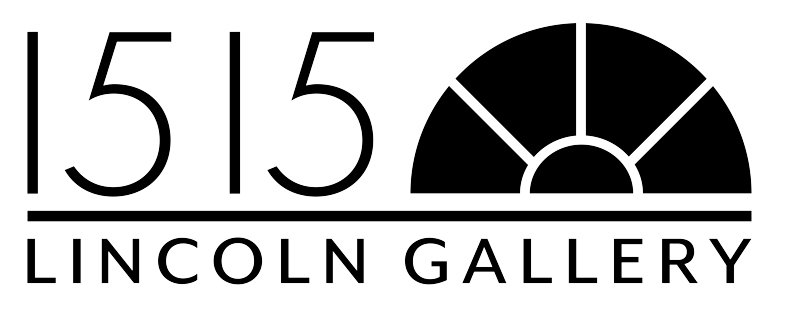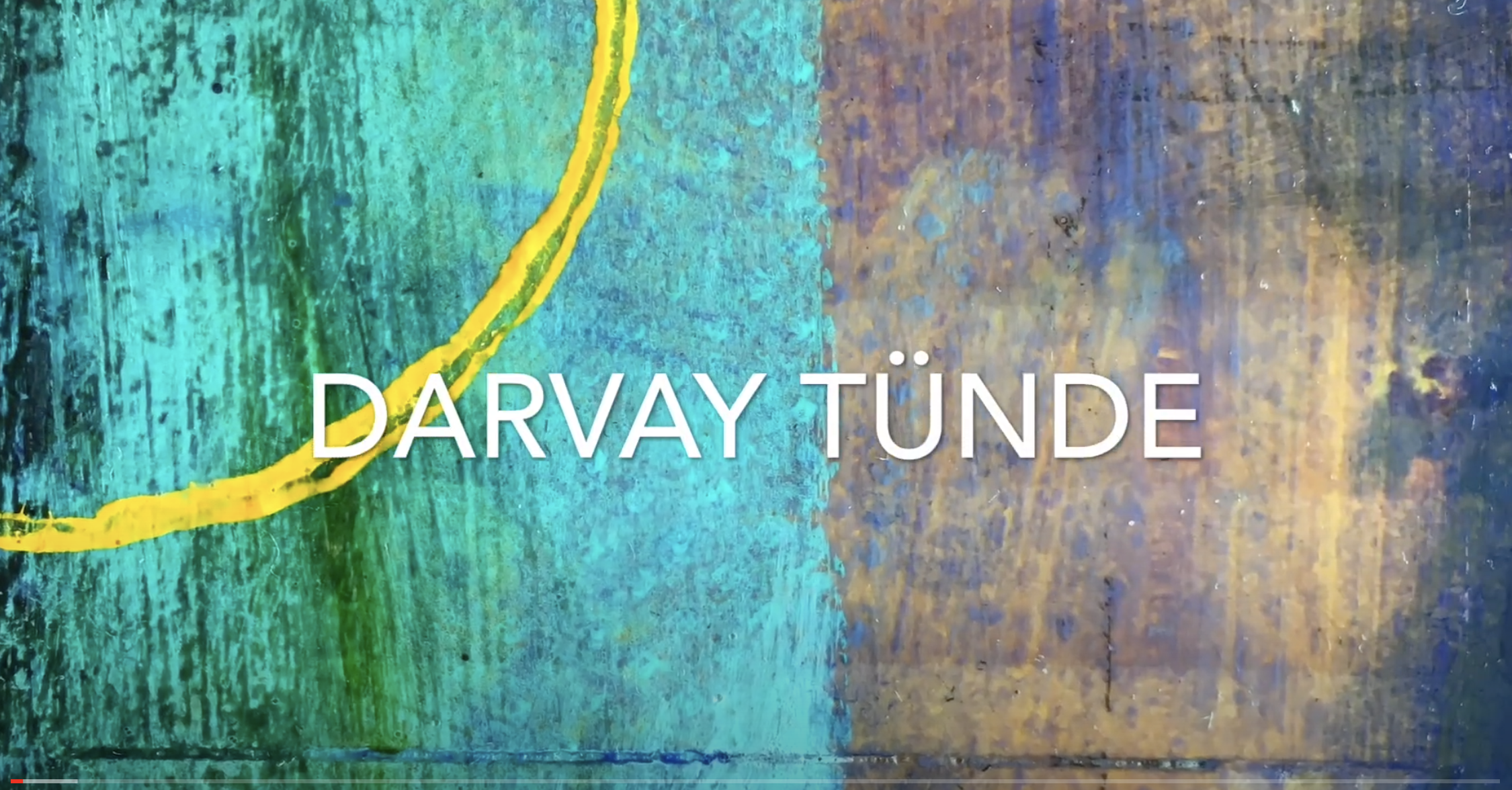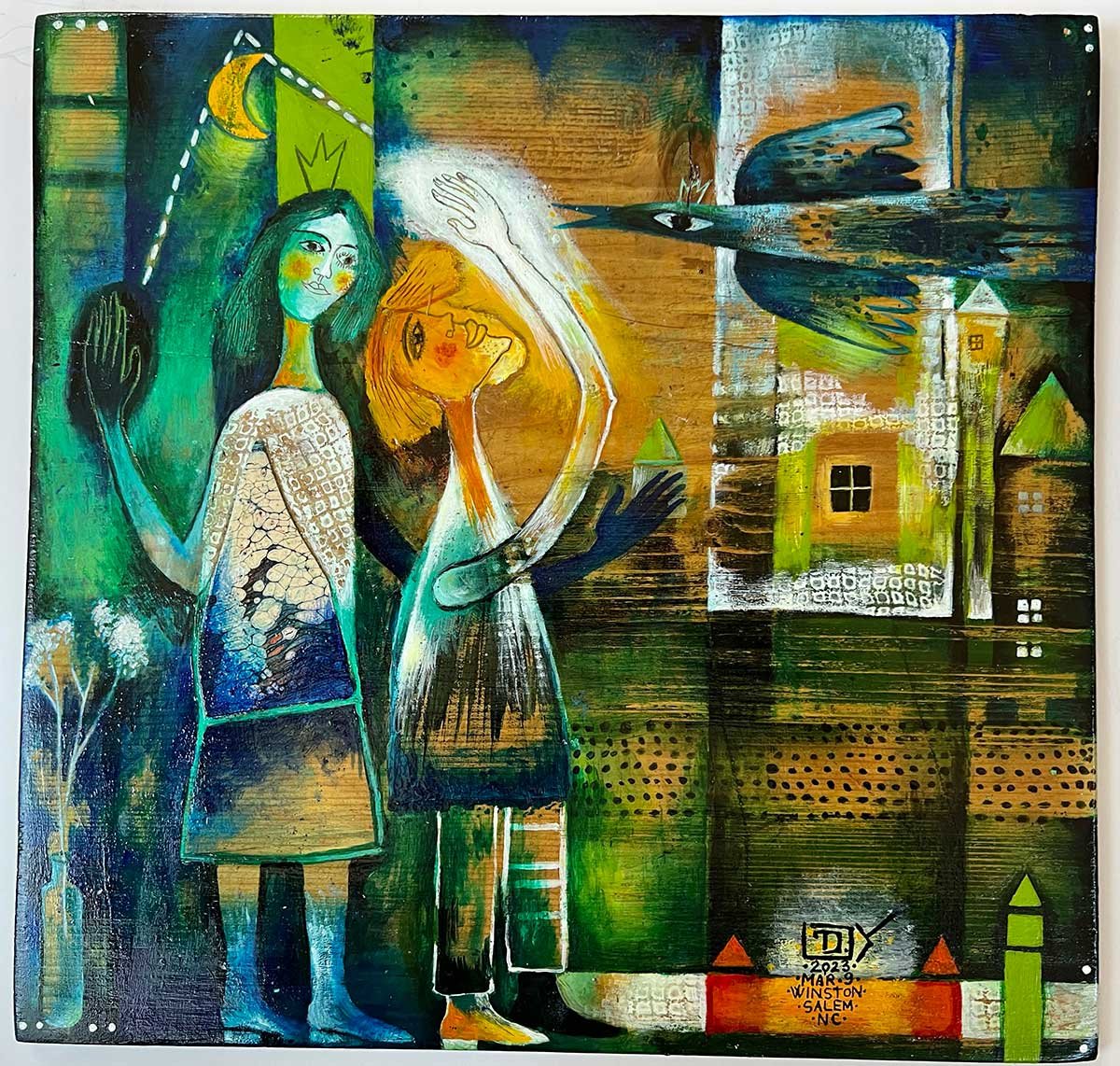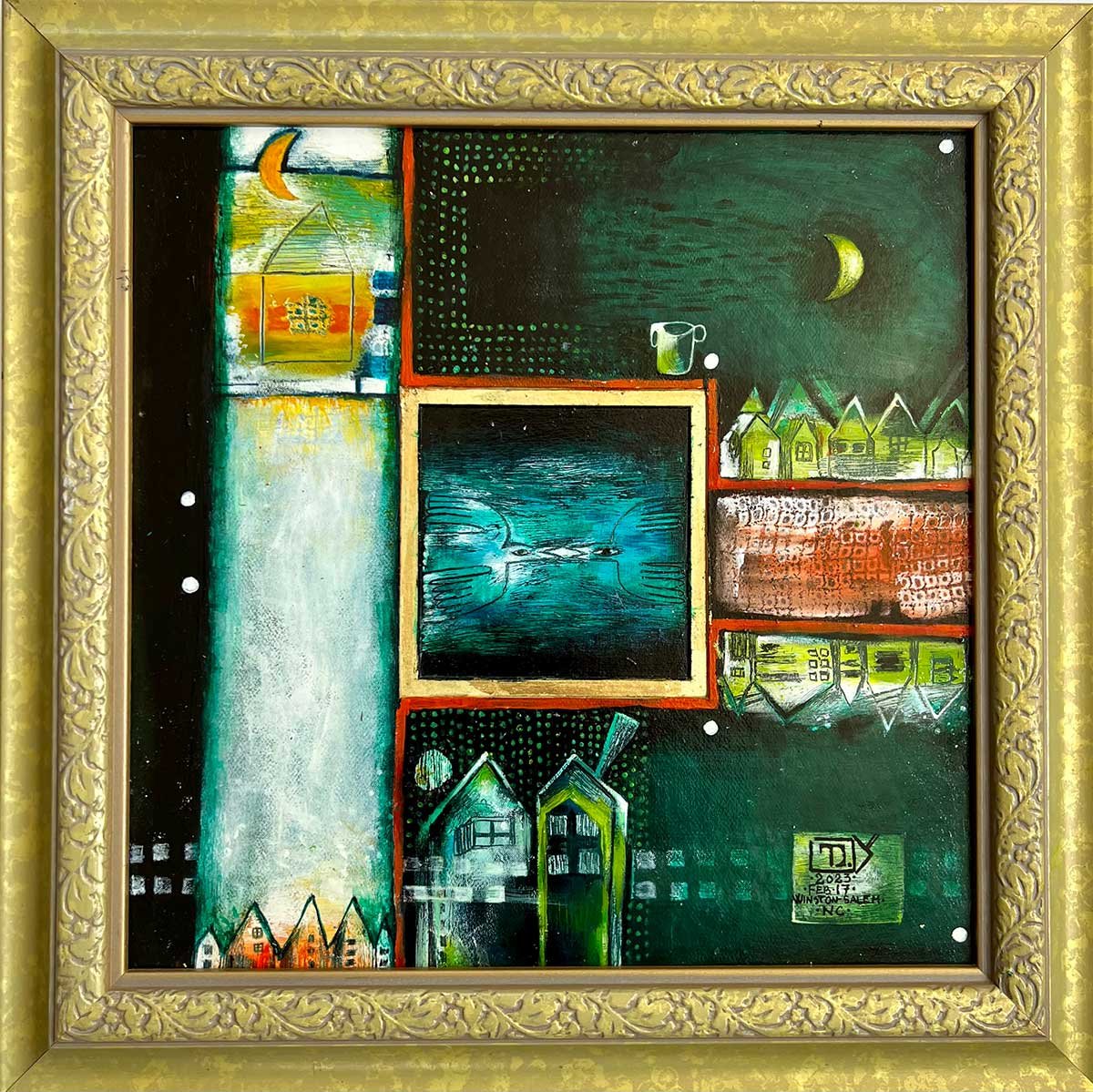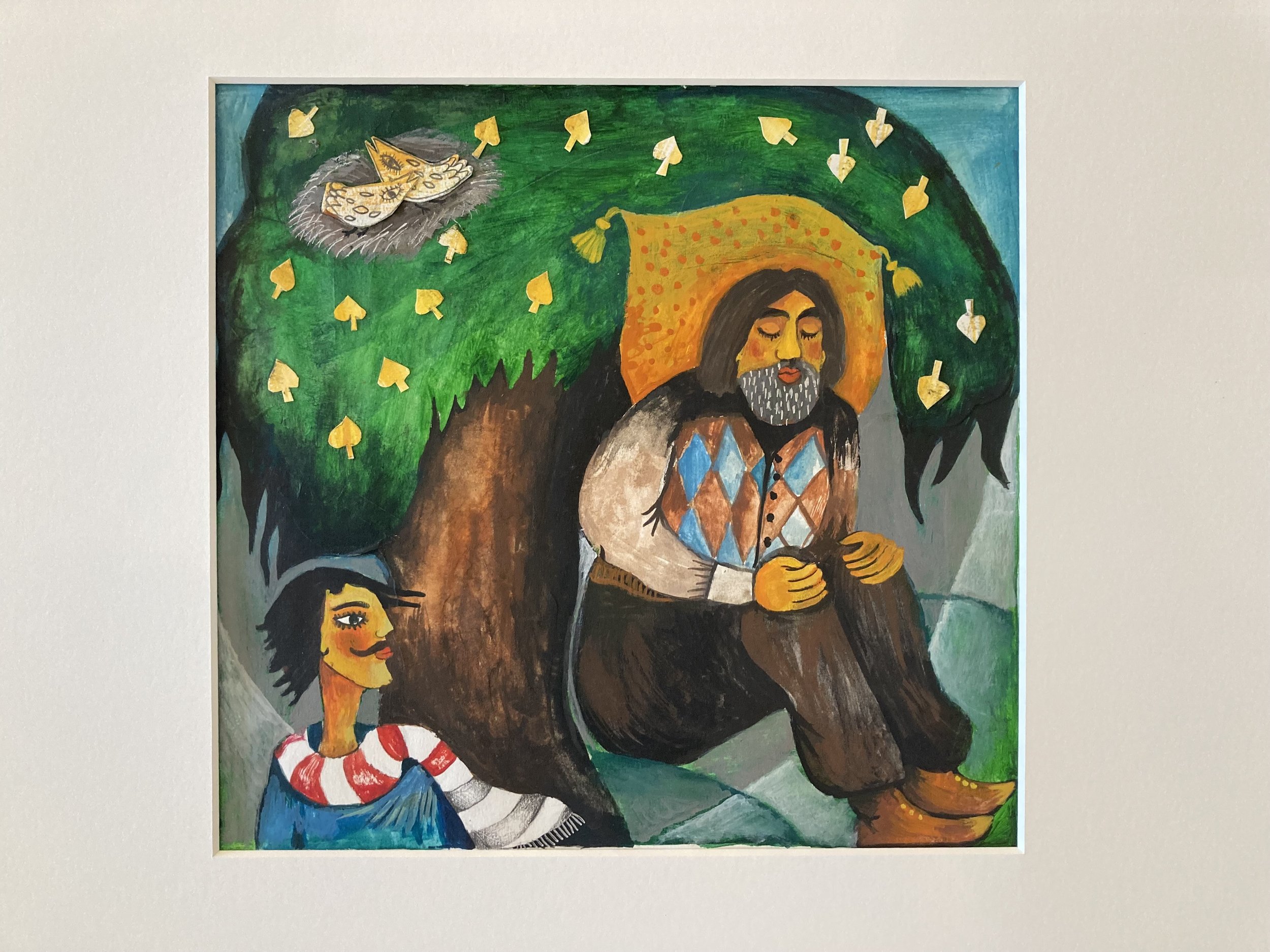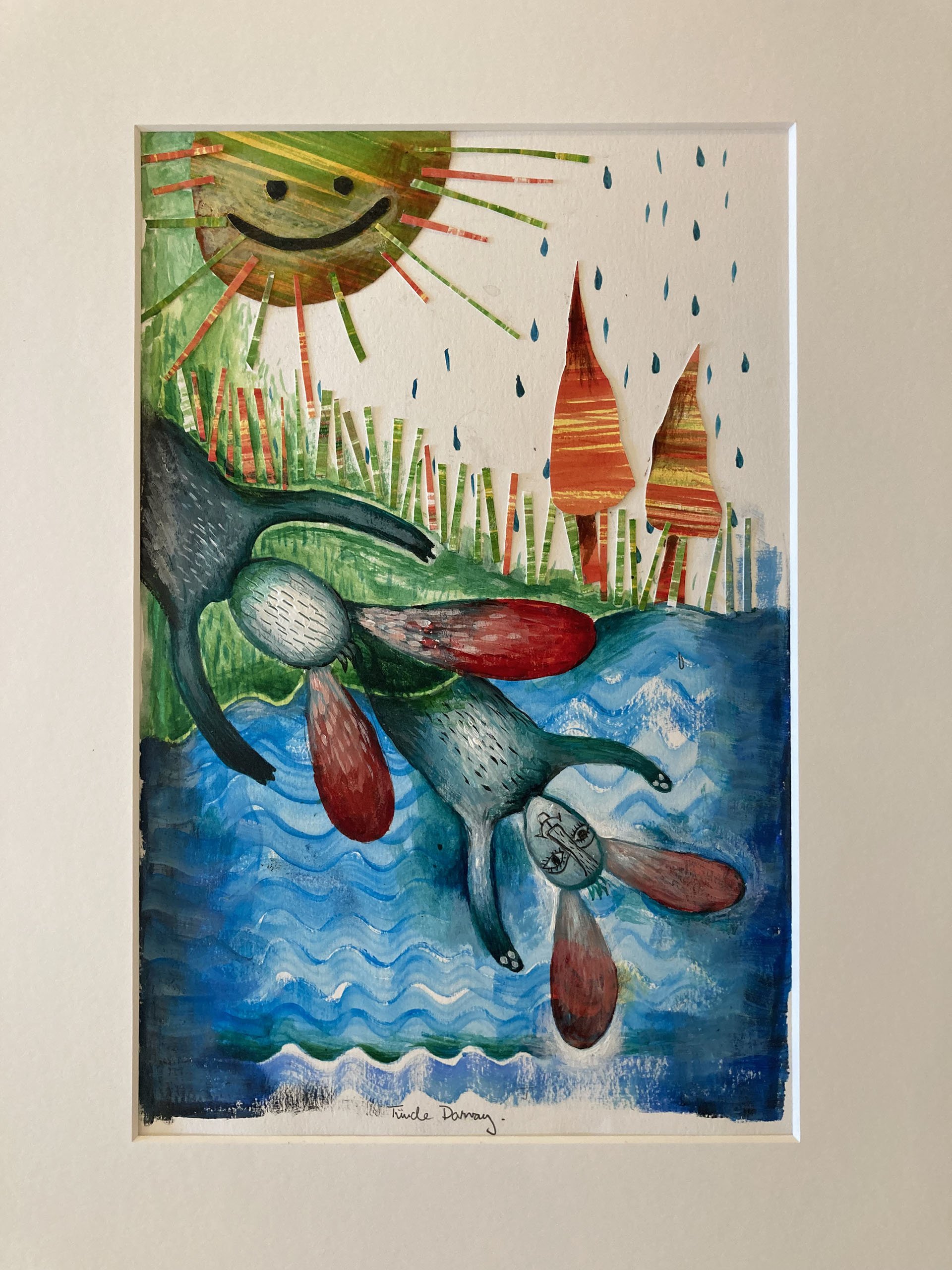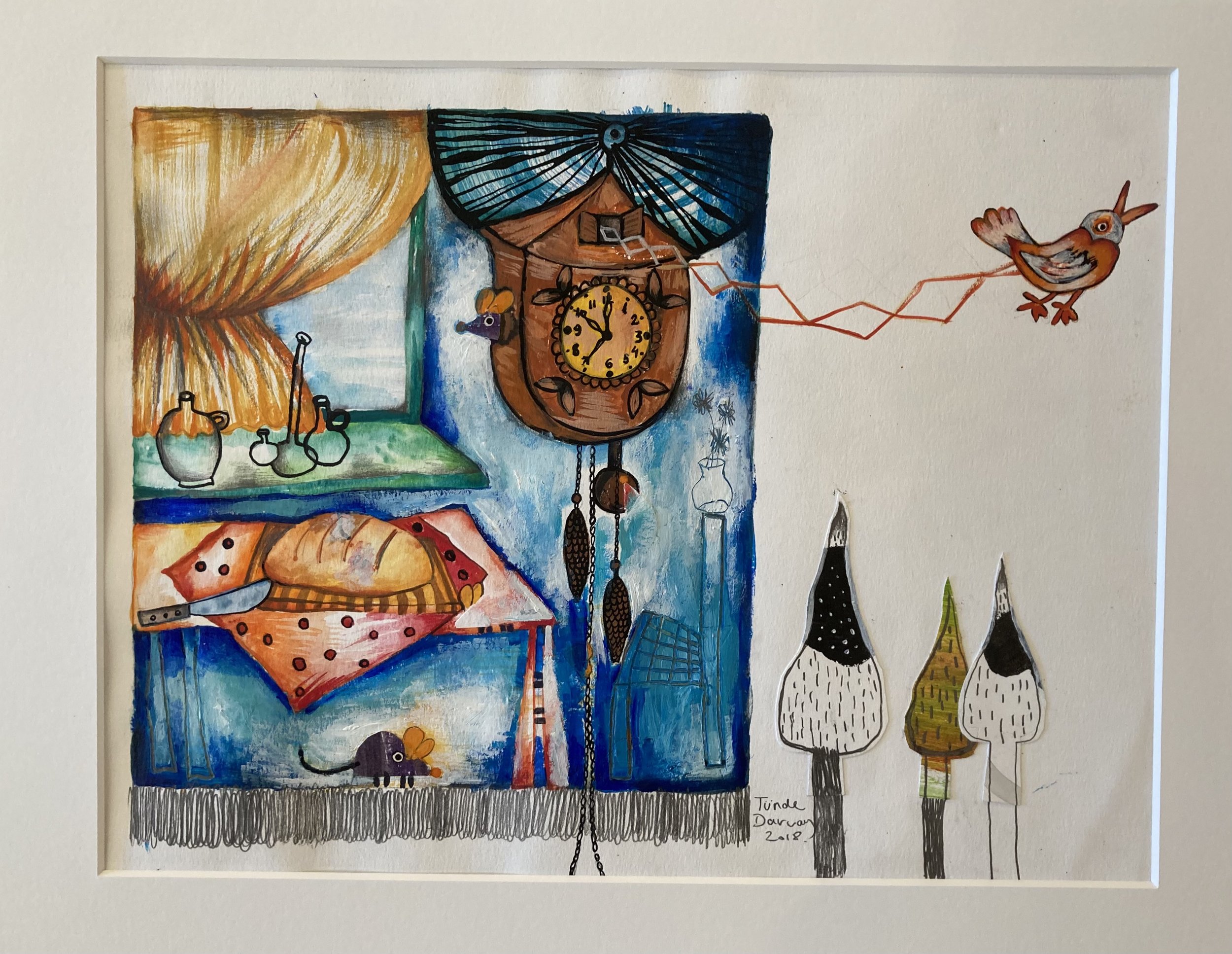Tunde Darvay
“I seek to distill into art the experience of living on two continents and encountering multiple cultures.”
BIOGRAPHY
Influenced by the unique rural landscapes of Transylvania, the place where I was born and have spent most of my life, my paintings emphasize the shadow-line between the organic and the inorganic. My aesthetic worldview is profoundly mythical: it depicts a world in which color breathes life into inanimate things in order to conjure up playful, suggestive associations along a broad spectrum of themes and forms. Houses have smiling or grinning doors, cheerful, winking, or teary windows, depending on their moody personalities. Chimneys protrude as if they were limbs. Trees hold hands and dance together, witnessed by the curious glance of birds, cats, and fish from behind the bushes. Winding roads follow their spiral course, according to their own precarious will. Color and composition jointly intend to disclose the immense network of cobwebs connecting all these things together, making them part of a highly sensitive organic universe in which every tiny quiver is perceived even in the remotest corners.
In order to achieve this aesthetic effect in my paintings, I continuously strive to blur the spheres to which traditional imagination usually confines things, whether living or inanimate, significant or trivial. The uniquely shaped, handmade wood frames do not enclose but rather extend my works. They invite my compositions to spill over into the fantasy of the beholder. Line and color give shape to things that surface from my memory but also beg to live on and be part of the lives of my audience. I seek to paint birds that uniquely embody all birds, houses that somehow envision all houses, and colors that include all the colors from dawn to dusk.
I guess the reason why children have always been especially responsive to my work is because they still possess the intuitive understanding of such a universe in which everything is connected. After all, who is to tell when childhood ends?
ARTIST INSIGHTS
How are your background and life experiences connected to your art?
People often ask whether the stories on my paintings are based in personal experience, whether they are memories, other people’s stories, or if they are imaginary tales or simply fables meant to cheer up the world. It is a universe that draws us in, makes us happy, one in which we feel good, and one to which we want to go back. I seek to add color to the universe I paint because color, playfulness, and variety often seem to be missing from our lives. After all, this is an imaginary world of mine, which is populated by things we encounter every day: not just simple objects but various living creatures, lovers, and all sorts of real and imaginary relationships of the human and animal world. Of course, I often put things in a new or somewhat unusual context, so in the corner of a painting we may find unusual things that people would not normally put there, but they acquire new meaning in this way.
Who are some of your biggest artistic influences?
I am influenced by artists such as Hundertwasser, whose colorful spirals seem to unlock the mysteries of the world, the dazzling fantasy worlds of Marc Chagall as well as the works of Pieter Bruegel, whose detailed genre paintings made me visit the Kunsthistorisches Museum in Vienna several times. I am also captivated, for instance, by Dali’s surrealist paintings, which are truly inspiring. The list could go on, of course.
How have you developed your artist career?
I tried to participate as much as I can in individual and group shows as well as artist talks and workshops. Like many other artists, I, too, feel charged and inspired by artist talks, workshops, collaborative projects, and art camps. The networks of art are extensive and far-reaching in today’s global world.
What does your artistic work intend to communicate to its audience?
My paintings show a quirky world in which figures defy gravity and fly about in the whirlwind of this colorful and whimsical universe where everything can happen.
Does your work comment on any current social or political issues?
These figures often express what is deeply hidden or repressed in us: a desire to get away from the dullness and the monotony of reality. The drabness of conventional existence can turn us all into wannabe bohemians, and the artist is perhaps special because he or she has the ability to give expression to this desire more than others.
What is one thing you would like your audience to know about you?
Nowadays I am painting more and more on recycled materials such as found wood and old furniture pieces. A piece of recycled and reused wood, combined with other recycled materials that have their own stories as well, can, I think, get a new lease on life, for the story is already contained within the material, so all I have to do is to bring it to light and add a bit of color and luster to it.
Do you have a particular story that stands out from your career as an artist?
I remember that coming to the U.S. as an artist fresh out of school, I was still finding my way. For thirteen years, we would spend three months in the summer in Transylvania, but for the rest of the year we lived in the United States, where I had to get familiar with an entirely new culture. That was when I started examining in more depth the various connections among cultures as well as transatlantic themes. It all began when shortly after my arrival, I received a grant focusing on the cultural similarities between the U.S. and Europe. I remember that back in those days I found it strange to arrive, especially after Kolozsvár’s heavy pedestrian traffic, to a place where car culture was the norm in society, and where you could not simply walk to the store round the corner to buy something. That was when I noticed that people did not interact with each other, so I started painting cuddling couples and people who embrace.
Why have you chosen to sell your work in the 1515 Lincoln Gallery?
I started my career as an artist in Oklahoma, and even though I no longer live there, I still miss the thriving art scene of the OKC area. 1515 Lincoln Gallery was recommended by friends and fellow artists who also show their work there.
What do you believe makes 1515 Lincoln Gallery distinct from other galleries?
Their professionalism and close attention to details in promoting artworks.
WATCH
That’s what it looks like when a painter makes her first selfie video about her art.
ARTIST STATEMENT
My works are visual representations of the fusion between Transylvanian and U.S. culture. My paintings typically feature uniquely shaped wood frames that serve not to enclose but rather to complement the composition. I usually draw inspiration from everyday life, but sometimes also from Hungarian folk tales, Greek and Roman mythology, film, poetry, music, and really from anything that comes my way and inspires me.
Tunde Darvay at work in her studio
“I usually draw inspiration from everyday life, but sometimes also from Hungarian folk tales, Greek and Roman mythology, film, poetry, music, and really from anything that comes my way and inspires me.”
The Albatross by Tunde Darvay
TUNDE DARVAY’S AVAILABLE ART
“My works are visual representations of the fusion between Transylvanian and U.S. culture. My paintings typically feature uniquely shaped wood frames that serve not to enclose but rather to complement the composition.”
